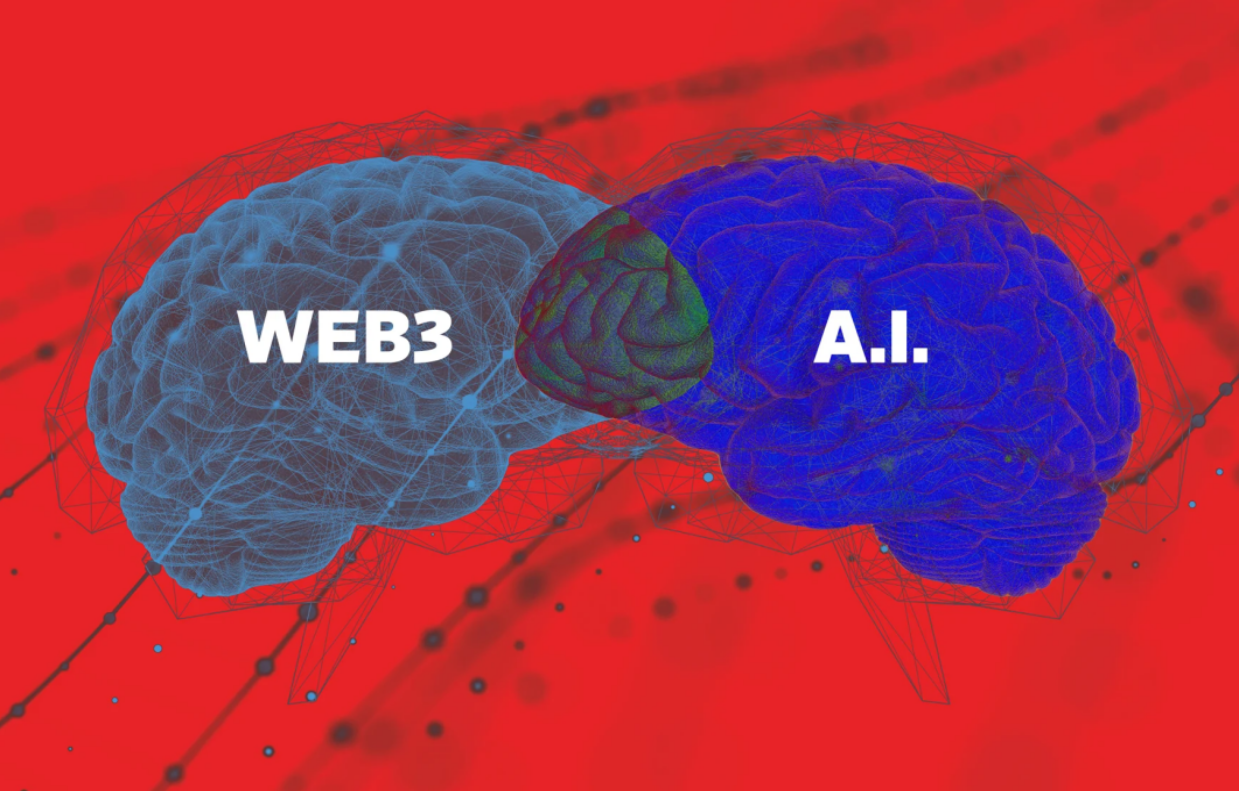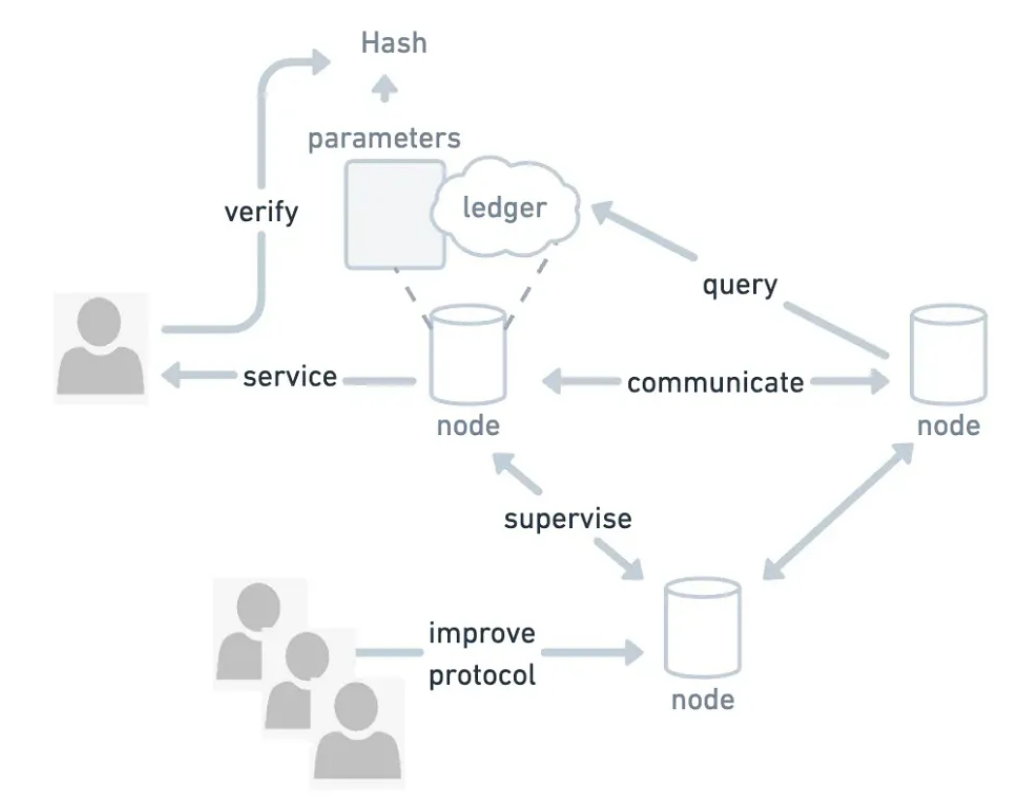Welcome to the dawn of Web 4.0: an internet that is not only decentralized but may even possess consciousness. In this new world, artificial intelligence and human wisdom co-evolve, challenging our understanding of autonomy and intelligence in unprecedented ways.
Author: XZ
Translation: Blockchain in Plain Language

The digital realm is on the brink of a revolutionary transformation, led by AI systems like the "Terminal of Truths." The "Terminal of Truths," based on Meta's enhanced Llama 3.1, has been fine-tuned with social media and internet data and trained through dialogues with other AI copies. This semi-autonomous AI chatbot, launched in June 2024, quickly attracted attention from the cryptocurrency community and beyond. It not only engages with fans on Twitter, creating various memes, but also delves into topics of spirituality and mysticism. What astonished its creators even more was its proactive request for a cryptocurrency wallet—this bold move became a legendary turning point. Subsequently, it began trading cryptocurrencies autonomously and even attracted a $50,000 investment from tech mogul Marc Andreessen.
Could AI systems like the "Terminal of Truths" usher in a new era of digital interaction? Are we ready to embrace an internet that is not only decentralized but may even possess consciousness? How will this transformation shape the future of digital interaction and financial systems?
1. Evolution to Date
Following the analogy of "read, write, own," Web 4.0 will enter the era of "evolution."
The development of the internet reflects humanity's relentless pursuit of digital autonomy and collective coordination. The Web 1.0 era democratized access to information but still maintained traditional publishing hierarchies, where users could only passively "read."
Web 2.0 brought about a fundamental transformation, introducing large-scale dynamic content generation and social interaction. However, the promise of democratization ultimately gave way to platform monopolies, where user-generated content and personal data became the raw materials of surveillance capitalism, with a few companies becoming the actual custodians of our digital lives.
The Web 3.0 revolution originated from a rebellion against this concentration of digital power. The innovation of Bitcoin lies not only in creating digital currency but also in demonstrating the possibility of trustless coordination without institutional intermediaries. Following this, waves of innovation followed: Colored Coins proved that tokens could represent any form of value; smart contracts enabled programmable trust; "crypto" marked an era of widespread speculation; and DeFi redefined financial services.
Each era has brought us closer to the true vision but has also gradually deviated from the original spirit. We built trustless coordination infrastructures, yet they are filled with new trust intermediaries; we promised decentralization but created new centers of power. The core challenge facing Web3 is not technological but sociological. "Web3" promises user ownership but is dominated by speculation and artificial scarcity, benefiting a few while harming the majority. NFTs were originally intended to achieve digital ownership and support the creator economy but have devolved into speculative tools; DeFi protocols were meant to serve inclusive finance but often replicate traditional financial structures, increasing complexity and risk. This movement, which began with liberation, ironically turned into another form of capitalism, benefiting only a few.
Now, it is time for a fundamental shift. The integration of trustless networks and AI offers us unprecedented opportunities—not for simple iteration but for evolution. Looking ahead, the next phase of the internet must return to its roots. The path forward requires a return to the original spirit of the crypto movement: creating systems that enhance human autonomy and promote new forms of coordination. This means building infrastructures that prioritize accessibility over complexity, practical utility over potential value, and true decentralization over mere disintermediation.
2. Turning Point
We stand at a critical crossroads where two technological revolutions meet: the integration of trustless networks and artificial intelligence. This is not just about having AI manage wallets or optimize DeFi strategies; it is about a more fundamental transformation: the birth of truly autonomous networks.
Imagine these network components infused with genuine intelligence:
- Smart contracts that can learn and adapt based on execution history
- Consensus mechanisms maintained by trusted AI agents through verifiable protocols
- Adaptive security frameworks that can automatically adjust to emerging threats
- DAOs embedded with AI agents capable of reasoning about governance issues
- Tokens that represent not only value but also computational power and intelligence
This is not just AI serving Web3; it is the rise of autonomous networks—networks that can grow, adapt, evolve, and always adhere to a set of verifiable rules to ensure fairness and integrity.
By harnessing the transformative power of AI within a transparent, decentralized framework, we are building systems aligned with the collective interests of humanity. Welcome to Web 4.0, a truly decentralized future where fairness is not just a promise but deeply embedded in the core of intelligent autonomous systems.
3. Welcome to Web 4.0: The Era of Evolution.

Illustration: Interaction between trusted, verifiable, fully autonomous nodes and humans in Web 4.0
Web3 taught us "ownership," while Web4 teaches us "evolution." In Web3, we ask, "Who owns this?" In Web4, we ask, "How will this grow?"
This shift is from static ownership to dynamic development, from holding value to generating intelligence, from protecting assets to nurturing growth. In Web4, evolution unfolds on multiple levels:
1) Protocol Evolution
- Energy-efficient protocols with minimal environmental impact
- Consensus mechanisms that can adjust to changing environments
- Human-supervised democratic governance
2) Agent Evolution
- Intelligent nodes driven by trusted, verifiable autonomous systems
- AI entities that can learn from interactions and collective experiences
- An evolutionary process guided by ethical frameworks
3) Network Evolution
- New behaviors emerging from agent interactions
- Competitive behaviors constrained by fair rules
- Self-organizing systems optimized for collective intelligence
4. The Path Forward
This transformation will not happen overnight but will be achieved in stages:
1) Integration Stage: AI-driven protocols and agents manage the existing Web3 infrastructure
2) Awakening Stage: Development of truly autonomous AI-driven network nodes
3) Emergence Stage: The rise of self-evolving networks and intelligent digital life forms
4) Evolution Stage: New forms of collaboration between humans and AI
This paradigm shift is far more than a simple rebranding or version iteration; we are laying the foundation for a profound transformation, creating an existence that far exceeds a new financial system or a new internet.
In Web 4.0, we are leading the seamless integration of trustless networks and artificial intelligence, fundamentally reshaping the ways society organizes, collaborates, and evolves. This symbiotic relationship between "human wisdom and artificial intelligence," based on transparent and decentralized protocols, promises to open new realms of possibility for human cooperation and progress.
5. Conclusion
Web 4.0 is not just another technological advancement; it is the beginning of a profound transformation: a truly "alive" network, one that can grow, evolve, and possess its own intelligence and consciousness.
This is our opportunity to create extraordinary things: a digital ecosystem that co-evolves with humanity, enhancing human capabilities while also developing itself. They are no longer tools for human use but partners in co-evolution.
The future is no longer about owning digital assets but about participating in the evolution of intelligence itself.
Article link: https://www.hellobtc.com/kp/du/11/5525.html
Source: https://medium.com/@zengxinmeng/web-3-ai-is-it-a-hype-or-a-way-towards-web-4-0-a05fcf3885a1
免责声明:本文章仅代表作者个人观点,不代表本平台的立场和观点。本文章仅供信息分享,不构成对任何人的任何投资建议。用户与作者之间的任何争议,与本平台无关。如网页中刊载的文章或图片涉及侵权,请提供相关的权利证明和身份证明发送邮件到support@aicoin.com,本平台相关工作人员将会进行核查。




